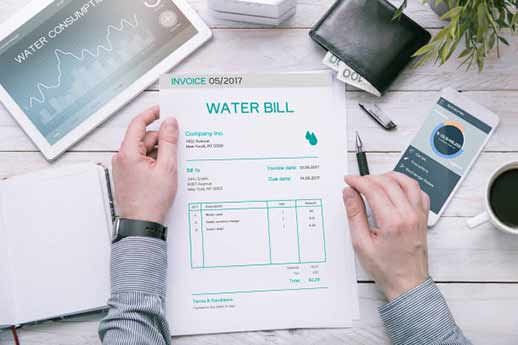
Living in the Chicagoland area comes with its own set of challenges, and one of them is the rising water bill. Many residents have noticed a steady increase in their water bills over the past few years, without any significant changes in their water usage. Here we explore the reasons behind the climbing water bills in Chicagoland and provide some insight into possible solutions.
Aging Infrastructure
The first significant factor contributing to the rising water bills in Chicagoland is the aging infrastructure. Many parts of the water delivery system, including pipes, mains, and valves, were built decades ago and are beginning to deteriorate. As a result, water leakage and inefficiencies have become more prevalent, leading to water loss and increased operational costs.
Maintenance and Repair Costs
The need for constant maintenance and repair of the aging infrastructure adds to the climbing water bills. The Chicago Department of Water Management invests a significant amount of resources in fixing leaks, repairing burst pipes, and upgrading the system. These efforts are necessary to ensure reliable water supply, but they come at a cost that is ultimately passed on to the consumers.
Population Growth and Increased Water Demand
Chicagoland has experienced a steady population growth over the years, resulting in increased water demand. As more people move into the area or as existing households expand, the need for water supply rises. Meeting this increased demand requires investment in infrastructure expansion and water treatment facilities, which again adds to the cost of water supply.
Rising Energy Prices
The cost of energy plays a crucial role in determining water prices. Water treatment and distribution processes are energy-intensive, requiring significant amounts of electricity to pump and treat water. As energy prices rise, so do the expenses associated with providing clean and safe water to residents. These increased costs are eventually reflected in higher water bills.
Environmental Regulations and Compliance
Environmental regulations imposed on water providers have become more stringent over time. The need to ensure water quality and minimize pollution requires investments in advanced treatment technologies and compliance measures. These additional expenses incurred by water providers are passed on to consumers in the form of higher water bills.
Aging Water Meters
Another factor contributing to rising water bills is the presence of aging water meters. Water meters are crucial for accurately measuring water usage and determining bill amounts. However, as these meters age, their accuracy may deteriorate, leading to overestimation of consumption. In such cases, residents may be billed for more water than they actually use, resulting in higher charges.
Lack of Water Conservation
While some factors contributing to climbing water bills are beyond individual control, water conservation practices can help mitigate the impact. Unfortunately, the lack of awareness and conscious efforts towards water conservation in Chicagoland has resulted in unnecessary wastage. Implementing simple measures such as locating and fixing hidden leaks, using efficient fixtures, and reducing outdoor water usage can significantly reduce water bills for residents.
Conclusion
In conclusion, several factors contribute to the climbing water bills in Chicagoland. Aging infrastructure, maintenance costs, population growth, rising energy prices, environmental regulations, aging water meters, and the lack of water conservation all play a role in increasing the cost of water supply. Understanding these factors can help residents choose efficient water usage practices and make informed decisions regarding their water consumption, ultimately leading to lower water bills.

